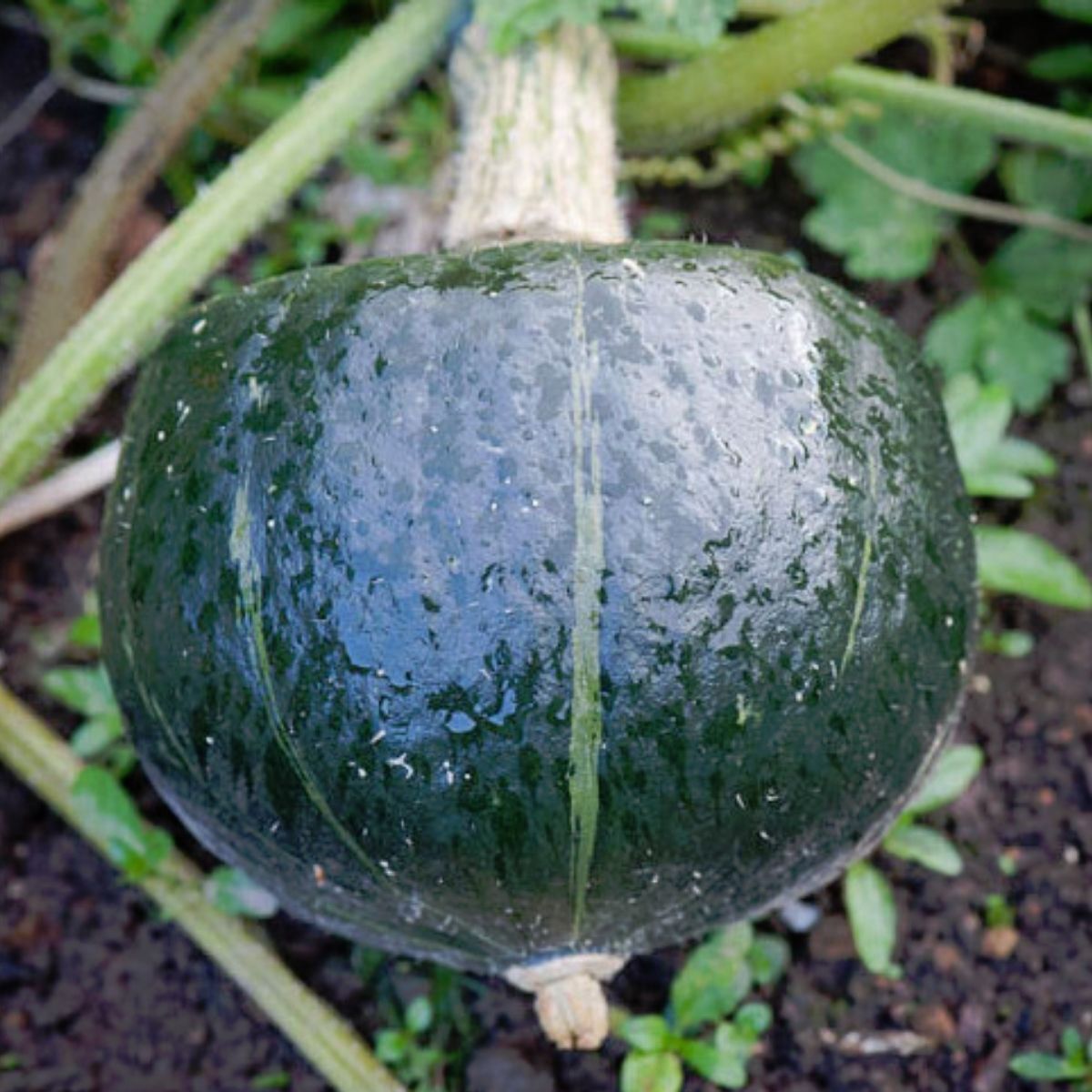Pumpkin- Burgess Buttercup
Couldn't load pickup availability
Description
Pumpkin - Burgess Buttercup (Cucurbita maxima) is a small to medium-sized winter squash variety known for its sweet, rich flavor and distinctive appearance. It is part of the Cucurbita maxima species and is a popular choice among home gardeners due to its delicious, smooth texture and ease of growth.
Features:
Appearance: Burgess Buttercup pumpkins have a unique, deep, dark green rind with a characteristic turban shape—flattened and slightly ridged. The flesh inside is a vibrant, deep orange with a smooth and fine texture.
Size: These pumpkins typically weigh between 3–5 pounds, making them small to medium in size. They have a thick rind and dense flesh.
Taste: The flesh is sweet, with a rich, buttery flavor and a dense, smooth texture. It’s ideal for making pies, soups, and a variety of savory dishes. The sweetness of the flesh enhances the flavors of both sweet and savory pumpkin recipes.
Uses:
Culinary: Burgess Buttercup pumpkins are extremely versatile in the kitchen. The rich flavor makes them a great option for pumpkin pies, cakes, muffins, and cookies. They're also delicious when roasted or pureed for soups, curries, and stews.
Storage: Due to the thick rind, Burgess Buttercup pumpkins store well for several months, allowing for use throughout the fall and winter.
Ornamental: With its unique shape and color, this variety is often grown for decoration and as part of autumn harvest displays.
Planting Instructions:
Soil: These pumpkins thrive in well-drained, fertile soil that is rich in organic matter. The pH of the soil should be between 6.0 and 7.0 for optimal growth.
Planting Time: Plant Burgess Buttercup pumpkins after all danger of frost has passed and when the soil temperature reaches about 70°F (21°C). Direct sowing into the ground after the last frost is typical, but you can also start seeds indoors 3–4 weeks ahead of time.
Spacing: Sow seeds about 1 inch deep and space them 24–36 inches apart in rows that are spaced about 5–6 feet apart.
Growing Instructions:
Sunlight: These pumpkins need full sun to grow well. Make sure your planting site receives at least 6–8 hours of direct sunlight each day for optimal growth.
Watering: Keep the soil evenly moist, especially during the fruiting period. Water at the base of the plant to avoid wetting the leaves, as wet foliage can promote fungal diseases.
Fertilization: Apply a balanced fertilizer or compost before planting. You can feed the plants with additional compost or liquid fertilizer halfway through the growing season to support strong fruit development.









